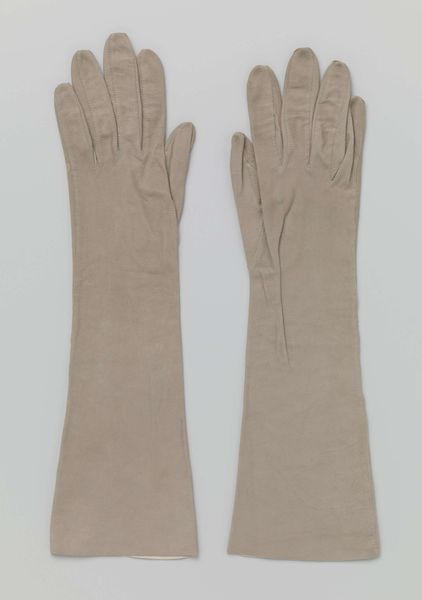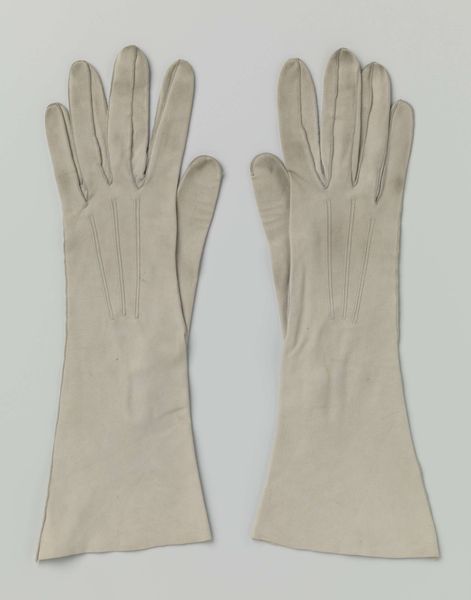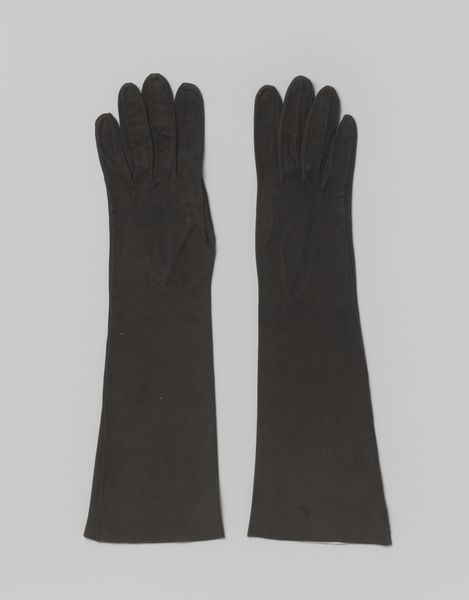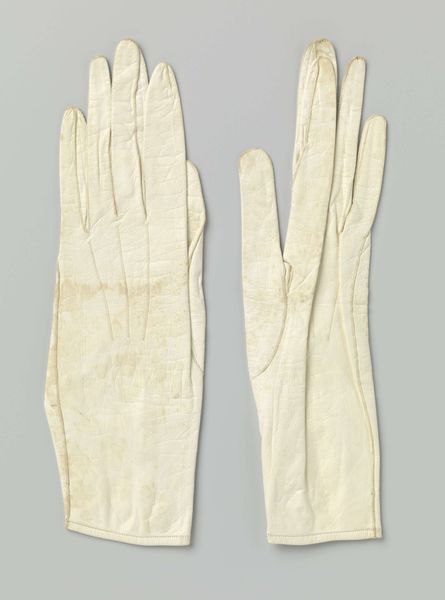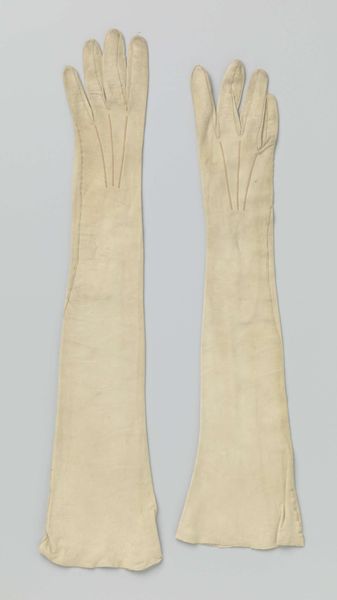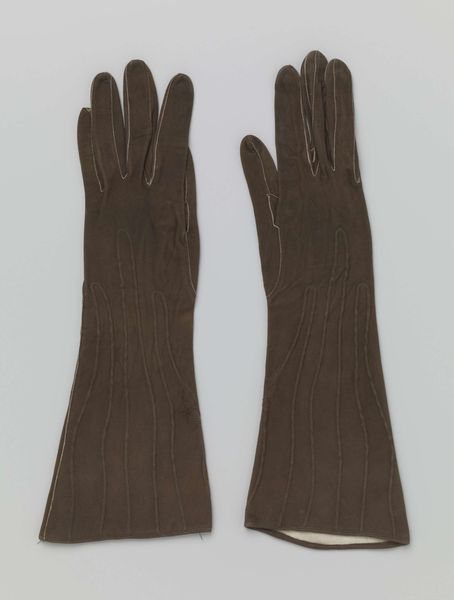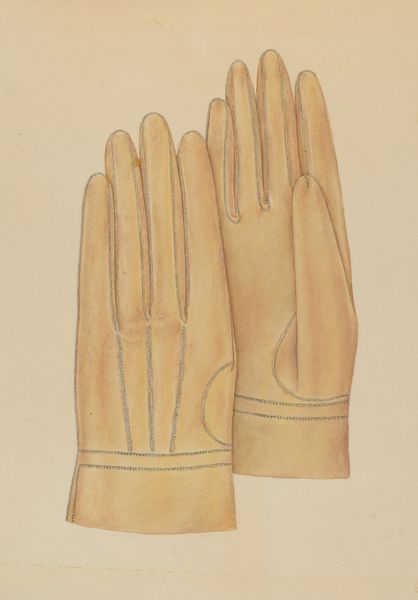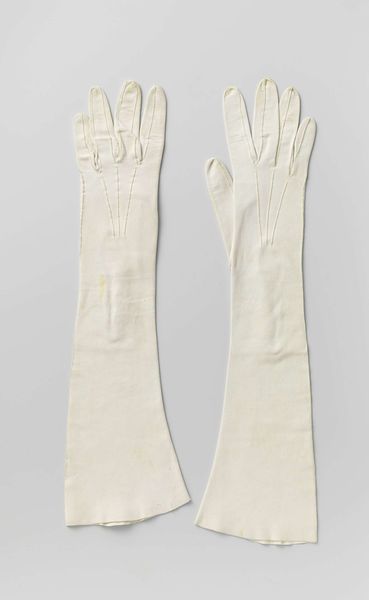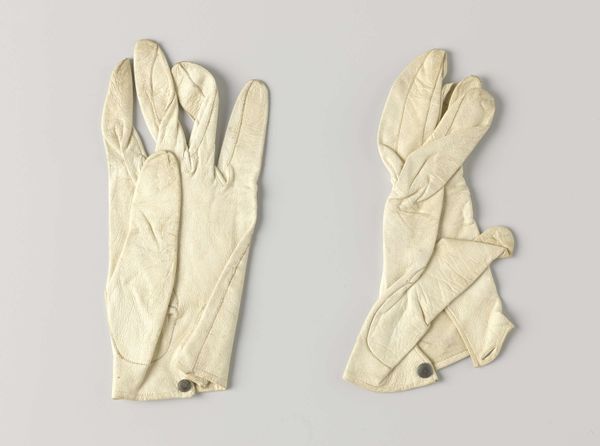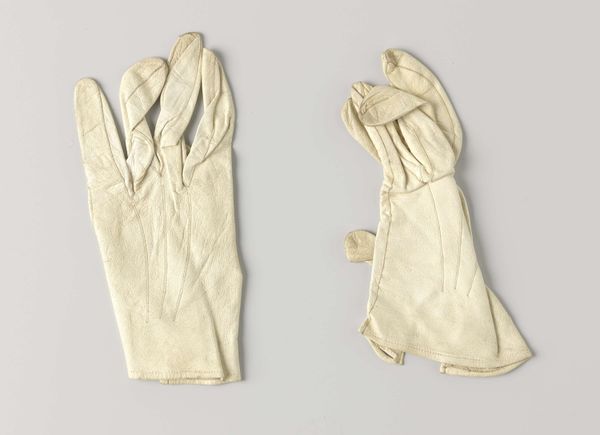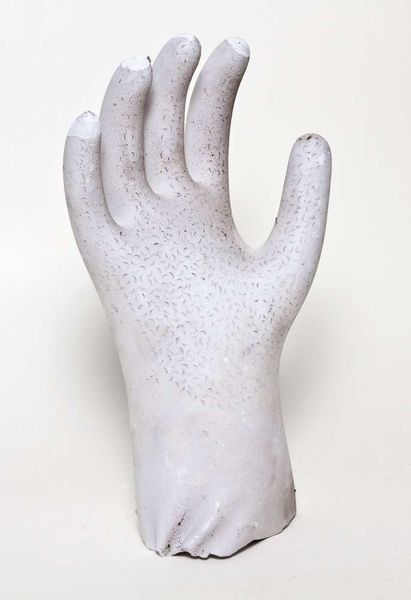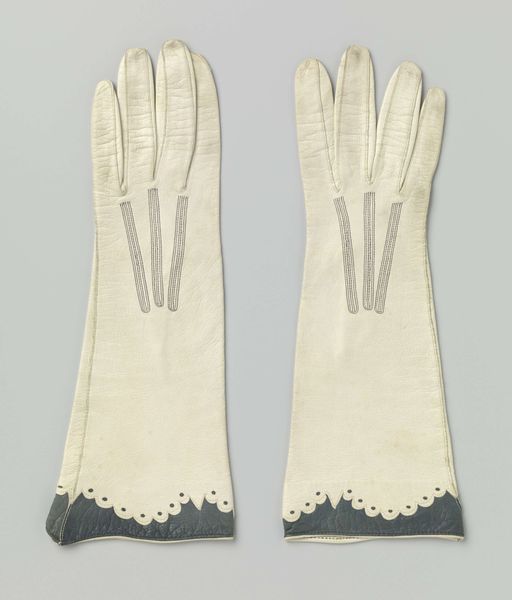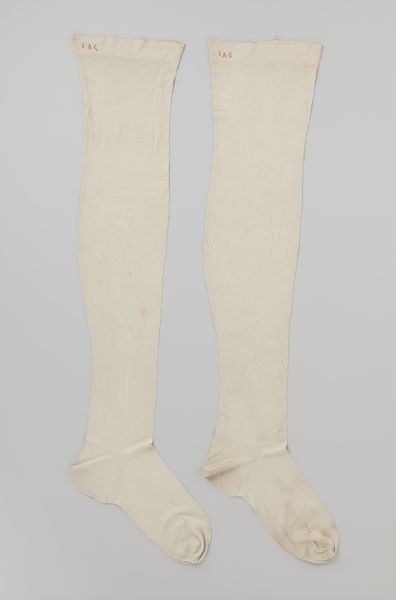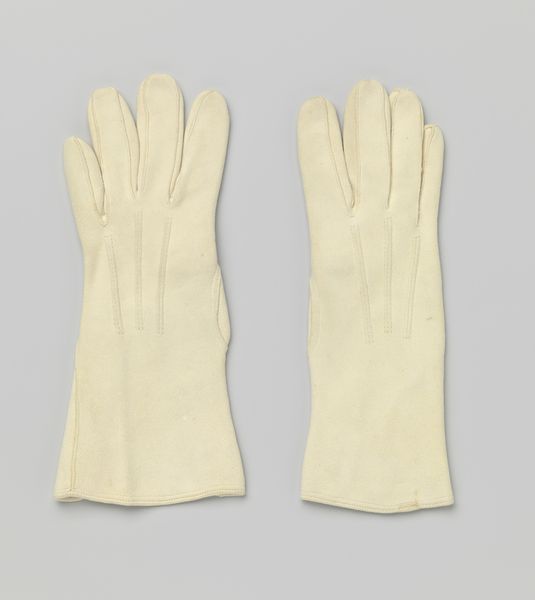
photography
#
still-life-photography
#
photography
#
watercolor
#
realism
Dimensions: length 38.5 cm, width 12 cm
Copyright: Rijks Museum: Open Domain
Editor: This is a photograph from circa 1915-1925 called "Handschoen van grijs zeemleer" or "Glove of Gray Chamois Leather," held at the Rijksmuseum. What I find immediately striking is how simply the gloves are presented, laid out against a plain background. How do you interpret this work? Curator: The simplicity you mention is key, but it’s a deliberately constructed simplicity. Consider the early 20th century. Photography was evolving rapidly, often used to document or emulate painting. This image transcends mere documentation; it suggests an absent subject. What do these gloves signify, given their presentation as an almost lifeless still life? Editor: Perhaps loss or absence? The gloves are so pale, almost ghostly. Were gloves significant fashion accessories at the time, signifiers of class or status? Curator: Precisely. Gloves in this era signaled respectability, often womanhood. However, they also became symbols of restriction, constraints imposed on women's roles. These gloves, displayed almost clinically, can be seen as a commentary on these societal limitations. Does their lifeless presentation then reinforce or challenge that? Editor: I hadn't thought of it that way, but it adds another layer. It's like they are relics, holding stories of a life lived under certain constraints. They speak of a time when something as simple as gloves were culturally loaded. Curator: Absolutely. And the fact that it’s a photograph, a medium initially seen as purely objective, makes it even more potent. It forces us to confront the subjective within the supposedly objective record, inviting us to reconsider women's place during that time. What have you noticed about their positioning in the frame? Editor: How they're not symmetrical… they have subtle scuffs, imperfections... I guess, suggesting the marks of wear and therefore use and agency, subtly pushing against any sense of lifelessness after all. Curator: Yes, their imperfection testifies to lives of struggle and the agency found within imposed limitations. It offers us insight into historical realities and possibilities. Editor: This photograph invites so many narratives, about the woman, class, and the time itself. It goes far beyond the object it depicts. Curator: It prompts critical thinking and connects visual artistry to sociopolitical analysis.
Comments
No comments
Be the first to comment and join the conversation on the ultimate creative platform.
